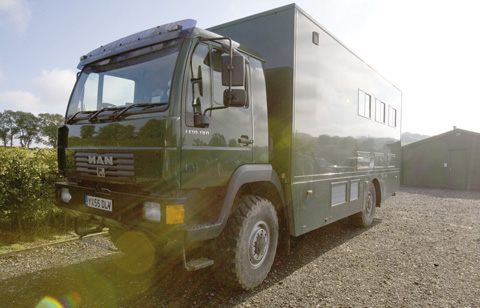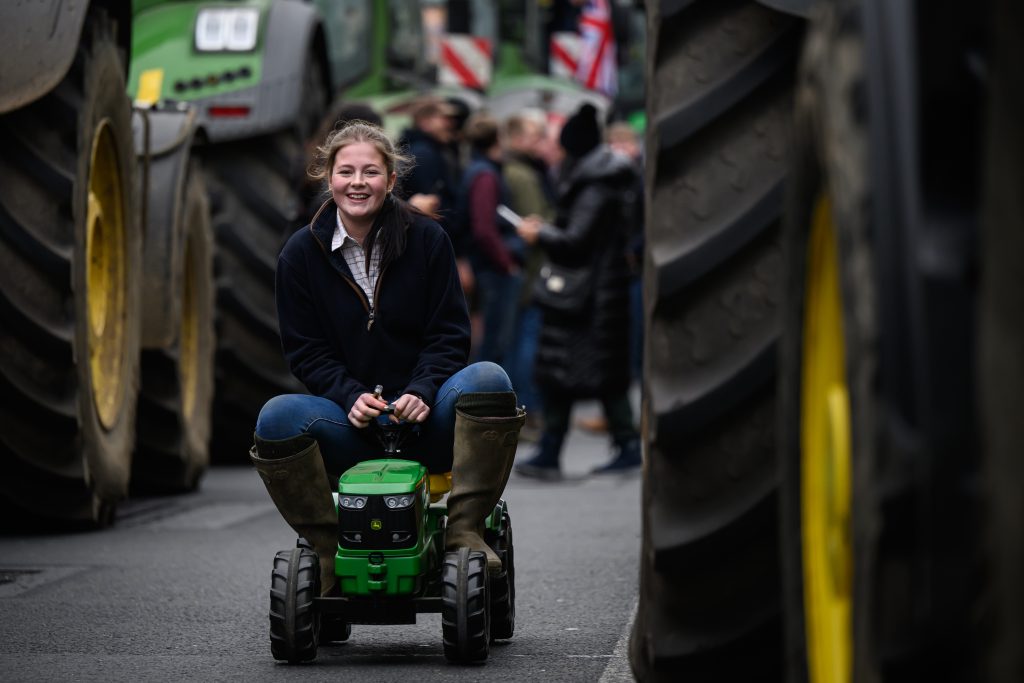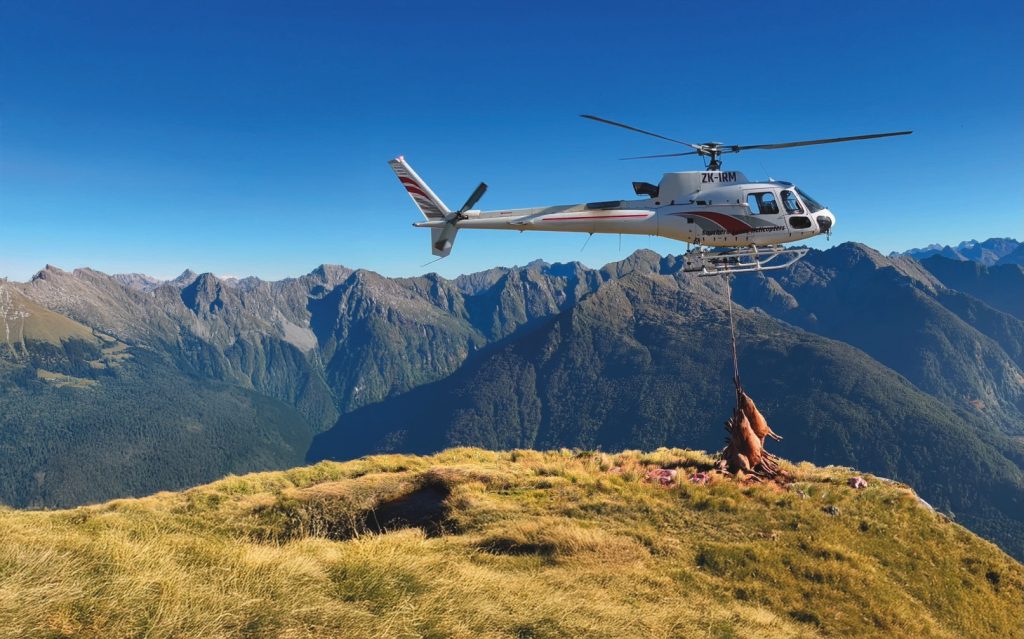Win CENS ProFlex DX5 earplugs worth £1,149 – enter here
Warter Priory: Game shooting in East Yorkshire
Warter Priory: A new chapter is being written at the Warter Priory game shoot thanks to an enthusiastic owner, hardworking headkeeper and his loyal team behind the scenes.

George Karr’s assessment of the shoot over dinner in the lodge was certainly to the point: “Warter Priory can only be described as the perfect day’s shooting. The commercial element has been removed and they treat people like private guests. Coming here is like Christmas every day. You wake up in the morning looking forward to it and you’re never disappointed when it’s over. I’d live here all year round if I could.”
George and his American pal Frank Buonauro happened to be staying at the same place as me – the Blue Bell Inn – the night before shooting at Warter Priory, and they’d spoken of the East Yorkshire shoot fondly, though they weren’t as wide-eyed as the Blue Bell’s landlord, Jarrod Fisher, who looked happily exhausted when he returned from the shoot earlier that afternoon. To George and Frank, Warter Priory is a relatively new fixture on their sporting calendar and one that has obviously made an impression as they have gone from booking a single day in 2010 to 15 days this season.
Warter Priory, which lies in the East Riding near Pocklington, is as part of Yorkshire’s rich shooting folklore as many of the famous shoots just a little bit further north, but its recent history cannot be described as uneventful.The former haunt of politicians and members of high society, Warter Priory suffered a steady decline after the War – the house and gardens were demolished in the early 1970s – until it was taken over by Malcolm Healey, the former owner of Hygena Kitchens, in the late 1990s. So what drove the Healeys to purchase the estate?
“Warter Priory really caught our eye as being one of the most unique properties we had ever seen available on the market,” explained Malcolm’s son and new estate manager Will Healey.
“The 12,000-acre estate is made up of fantastic arable land, wonderful woodland that is home to so much wildlife, and deep dales perfect for shooting. What more could you ask for?”
The purchase of Warter Priory was also the beginning of a sporting journey for father and son.
“I don’t think you could ask for a better place to learn how to shoot top quality birds than here,” said Will, who takes a peg around three days a month. “When we purchased the estate we knew about the wonderful shooting history dating back over 100 years. In its heyday, Warter Priory set the record for the highest number of birds shot during one game day. This was around the time when Winston Churchill was a regular visitor.”
A central pillar of the operation is headkeeper and shoot manager Frank Croft, an affable Yorkshireman admired by guns and respected by those who work under him. As a North Grimston schoolboy, Frank would watch in awe from the bus stop as motorcades carrying guns to Warter Priory drove by, and he says this seasonal routine was a huge influence on his decision to become a gamekeeper. After starting his career at Settrington and South Dalton, before spending 15 years at Farndale, his inner schoolboy must have been glowing when the Healey family appointed him headkeeper in 2002.
“When trying to fill the position for our headkeeper we did a lot of networking with experienced guns,” Will explained. “We also spoke to many friends who were shooting enthusiasts, and Frank’s name kept coming up in conversation. Once we met Frank it was clear he was going to be the best keeper we could possibly get.”
There was no time to stand on ceremony, however. Aside from the odd family day, an inconsistent amount of shooting had taken place on the estate for a number of years. A huge woodland management programme is now one of the key drivers of the changing face of the estate, with some 30-40 acres felled on the magnificent Angels alone to encourage the birds to fly. There was the question of reputation to address too, as Will explained.
“Over the last 30 years the perceived image of Warter Priory was a ‘low and plenty’ shooting estate, so our biggest challenge was shaking this reputation. A lot of hard work has gone into planning drives, making appropriate changes to the landscape, with a particular focus on the woodland, and building up our team. The eight keepers and all the people who help with beating, picking-up and hospitality play a huge part in making the image of Warter Priory a positive one.”
Watch the Warter Priory birds fly
The landscape at Warter Priory is quite insane. Take the near symmetrical v-shaped banks channelling up towards a small wood at The Plump, the day’s first drive – so steep guns might feel they’re walking between two grass-covered tankers listing towards one another.
Frank pegs each gun out individually to avoid disputes about who’s in or out of the shooting, and those in the shade on this particular day were probably thankful to be away from the low autumn sun leering down the line. While there weren’t a great number of birds shot, the regular guns, if they needed reminding, certainly got an idea of how high the partridges could get out from the woods or cover way above. They were certainly sporting, the majority quartering over the line towards the opposite bank from which I watched proceedings. From my vantage point it was as interesting to watch guns and their loaders anticipating the next shot as it was a challenge to catch the partridges in flight and trying to imagine the moment when I would pull the trigger myself – I almost always missed behind.
Although his guns didn’t seem to care about the lack of felled birds – not least because curling birds made for a harder shot – Frank admitted he had been caught out by the wind on the curtain raiser.
It is customary for the pickers-up to wait 10 minutes after the drive’s end to go about their duties, giving the beaters the chance to regroup and the guns time to gather around the gunbus for a nip of sloe gin, block of cheese, slice of cake or a catch-up, the conversation usually focusing on how on earth they were supposed to bring the birds down.
It’s probably no accident if the name Warter Priory is unfamiliar to you. Aside from the odd magazine article or news story about its annual charity fundraiser, the Bush Beaters’ Ball, Warter Priory prefers to manage its profile in its own way – not because it doesn’t want an outsider to look in, more perhaps because it wants to get to know and nurture new relationships steadily. They suffer no fools, mind you.
“We prefer word-of-mouth for our advertising,” Frank told me. “We’re not a gentlemanly shoot in terms of ‘oh that’s your bird, no it’s your bird’ – if it’s a good bird anyone should be allowed to shoot it provided they don’t get greedy. We’ve had greedy guns in the past and they don’t get a second invite or are told we’re full. We expect a certain degree of decorum here.”
It might be a massive estate with around 50 drives but a farm shoot atmosphere pervades throughout Warter Priory. Most, if not all guns shooting on this day were part of the 95 per cent repeat customer base, and given most were also present at the Bush Beaters’ Ball (the shoot day was one of the auction lots) all were in good humour with one another.
Rachel Carrie, accompanying her father David, explained why the scale and quality of Warter Priory shouldn’t put off newcomers.
“This is a family-orientated shoot – if you are a regular visitor you become part of the extended family. Game shooting can be quite intimidating, especially on big estates where it’s only open to the rich or high society, and this shoot is an example of how that stereotype is wrong. Frank tailors the day to the team and there are always plenty of birds in the air for guns like me who are still learning the sport. Everyone knows each other here and that means it’s more informal, making for a better day out.”
The only frustration for the team on this day was that they were shooting partridges only and the pheasants were extremely tempting. The common feeling was one of ‘if only’ as they went by. The theory is that the more the pheasants hear gunshot and fly over, even out of season, the higher and faster they will eventually become when the time comes.
When chatting to loaders and guns about Warter Priory’s shoot management, ‘clockwork’ was a word that came up time and again, suggesting a regimented approach without the discipline of an army unit. This is a mixed shoot with pheasants bred on site and partridges brought in as 18-week-olds from Bettws Hall in Powys every July. Birds are released all at once in the various covers, with one field brought in at a time to share the shooting around the estate.
There are no woodland drives until late December and those drives shooting well near the season’s end become cocks only.
Frank is no magician, and when the wind is against his team as it was on The Plump, things don’t always go according to plan. Drives aren’t decided until shoot day so Frank often endures a battle of wits with nature. Unable to triumph alone, he relies heavily on the help of his brother, Richard, who was brought in from Kepwick. Frank and Richard are in constant radio contact during drives, quietly relaying instructions and gathering information about what the other can see – the result is the presentation of an optimum number of birds. This was especially the case on Eddy’s Gallery, where partridge and pheasants fanned across the line for several prolonged periods. Here Richard was encouraged to keep his beaters moving forward while those in the line frantically switched guns with their loaders. The sound of the birds was almost enough to drown out the excitable gasps way down below.
As we made our way back to the gunbus, I asked loader John Lanham, who has worked with Frank for a number of years, why this approach to communication is so important.
“If he’s on the radio, he’ll be saying to Richard ‘you need to do this’ or ‘you need to let me know what happens when you get there’, because if Frank doesn’t know and things are going wrong, he can’t put them right. Everything has to work in harmony whether it’s guns, birds or beaters. People pay a lot of money to shoot here and it has to be right. If it’s right, it’s successful, everyone can go home happy and they’ll come back. Believe it or not, if a Chinese lantern were to come down onto the shoot of a morning, Frank and Richard would know about it and find a way to use it to their advantage.
“Watch Frank on a windy day when he’s got to supply birds to nine guns – it’s an absolutely brilliant spectacle. It’s amazing how far he can push them over the guns. He’s with his guns all the time but he’s also with his beaters. Drives are governed by the weather and Frank is disappointed when he can’t show what he wants – the pressure must be draining at times!”
Like all keepers who are on call until gone midnight and have only a few hours sleep before their next working day, it’s a wonder Frank hasn’t either keeled over or fallen asleep on a drive.
I asked what keeps him motivated.
“I’ve always wanted to be involved in shooting,” Frank said. “The worst day of the whole year for me is February 2 because everything stops. Familiar faces disappear overnight. People say ‘I bet you’re looking forward to the end of the season’, but I don’t – I hate it.”
Warter Priory was a delight to visit and it isn’t hard to see why so many guns cherish their trips here, and not just for the sport. Frank pulls the strings on and off the peg but he would be nothing without the backing of his owner and the loyalty of those under his wing – many of whom have followed him to whichever shoot he has worked. This is not a shoot where the faceless or nameless reside and it is not hysterical to suggest that shooting’s reputation in the eyes of the wider public would be greatly enhanced if there were more big shoots like this around.
————————
The Warter Priory gunbus
There’s no gunbus quite like the one at Warter Priory anywhere in Yorkshire, if not the whole of Britain. Built at a cost of around £100,000, the innards of this 12-seater behemoth could nudge high-end coach firms into the shade. How many of them have a small kitchen behind the cab containing a microwave, sink or fridge?
The £100,000 gunbus at Warter Priory is one of the most prestigious in the county.
Grander still for a gunbus, there is a television screen to watch films and footage from shoot days past at Warter Priory. Throw in the air-conditioning, heating system and the obligatory serving hatch on the off-side and you have a truly unique all-round “social wagon” as Frank coined it; there is even a phone line inside (presumably used by guns to crow about the quality of the shooting to their pals).
————————
The Warter Priory shoot lodge
The seven-year-old shooting lodge at Warter Priory is the main meeting place for guns before the off and where everyone pauses for lunch before the last drive. There are numerous nods to the shoot’s past in the old Rickman Barn, such as game cards (including one from when Winston Churchill paid a visit) and even original newspaper cuttings from the 1970s gifted from locals detailing the demise of the house and gardens of Warter Priory.
During its long history the shoot has been under the stewardship of five Lord Muncasters, one Lord Nunburnholme, the 4th Marquis of Normanby and two shipping magnates, one being Stavros Niarchos, who ran the shoot for a short spell in the 1970s. The records around the dining table and roaring fire resurrect every era of the shoot before your eyes; ironic, as you are making history too.
————————
Factfile of the Warter Priory shoot
Size: 12,000 acres
Quarry: Pheasant and partridge
Contact: will@warterpriory.com or for bookings email: julie@warterpriory.com
Related Articles
Get the latest news delivered direct to your door
Subscribe to Shooting Times & Country
Discover the ultimate companion for field sports enthusiasts with Shooting Times & Country Magazine, the UK’s leading weekly publication that has been at the forefront of shooting culture since 1882. Subscribers gain access to expert tips, comprehensive gear reviews, seasonal advice and a vibrant community of like-minded shooters.
Save on shop price when you subscribe with weekly issues featuring in-depth articles on gundog training, exclusive member offers and access to the digital back issue library. A Shooting Times & Country subscription is more than a magazine, don’t just read about the countryside; immerse yourself in its most authoritative and engaging publication.








